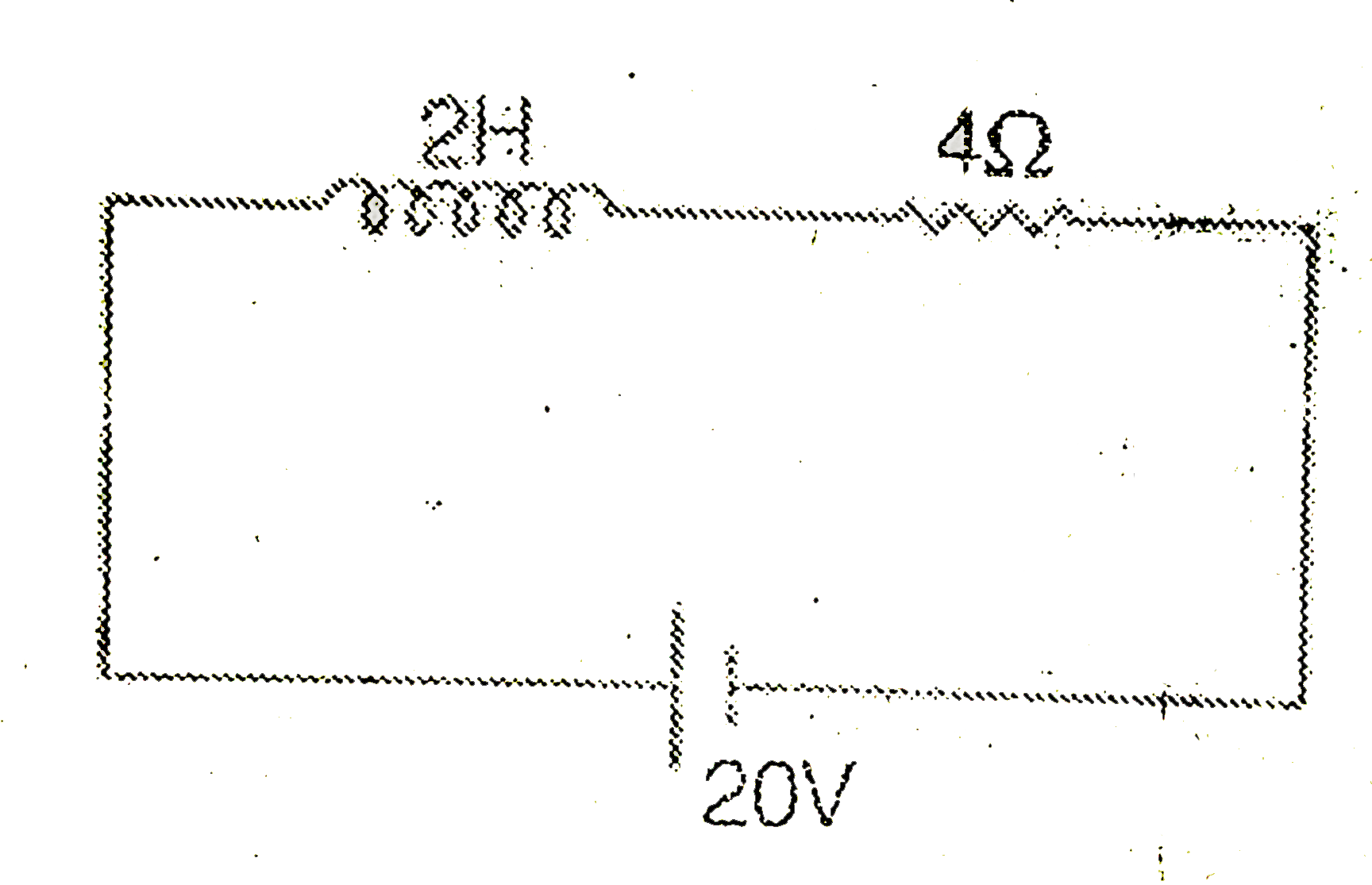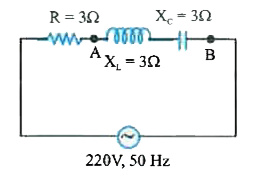In R-L-C series circuit, the potential difference across each element is 20 V. Now the value of hte resistance alone is doubled, then PD across R, L and C respectively.
20 V, 10 V , 10 V
20 V, 20 V, 20 V.
20V, 40 V, 40 V.
10 V, 20 V, 20 V.
The correct Answer is:A
(a) XL=XC=R
When resistance is doubled then impedance is also doubled .
Z=√(R−R)2+(2R)2=2R
Current is halved .
Potential difference across resistance remains 20 V but it is halved for inductor and capacitor .
Hence option (a) is correct.
Topper's Solved these Questions
- BOOK - MODERN PUBLICATIONCHAPTER - ALTERNATING CURRENT EXERCISE - COMPETITION FILE JEE (ADVANCED ) FOR IIT ENTRANCE4videos
ALTERNATING CURRENT
- BOOK - MODERN PUBLICATIONCHAPTER - ALTERNATING CURRENT EXERCISE - COMPETITION FILE C. MULTIPLE CHOICE QUESTIONS17videos
ALTERNATING CURRENT
- BOOK - MODERN PUBLICATIONCHAPTER - ALTERNATING CURRENT EXERCISE - COMPETITION FILE (OBJECTIVE TYPE QUESTIONS) B. MULTIPLE CHOICE QUESTIONS15videos
ALTERNATING CURRENT
- BOOK - MODERN PUBLICATIONCHAPTER - ATOMS EXERCISE - Chapter Practice Test16videos
ATOMS
Similar Questions
Knowledge Check
- Question 1 - Select One
In an LCR series circuit, the voltage across each of the components L,C and R is 20 V. The voltage across the L-C combination will be
A20 VB40 VCzeroD20√2V - Question 2 - Select One
In an L-C-R series circuit, the potential difference between the terminals of the inductance is 60 V, between the terminals of the capacitor is 30 V and that across the resistance is 40 V. Then, the supply voltage will be equal to
A10 VB50 VC70 VD130 V - Question 3 - Select One or More
In the L-R circuit as shown in figure, potential difference across the resistance at some instant is 4 V. Then
 Acurrent is increasing at a rate of 8A/s at this instantBpower supplied by the battery at this instant is 20WCpower stored in the magnetic field at this instant is 16WDcurrent in the circuit at this instant is 1A
Acurrent is increasing at a rate of 8A/s at this instantBpower supplied by the battery at this instant is 20WCpower stored in the magnetic field at this instant is 16WDcurrent in the circuit at this instant is 1A
In an LCR series a.c. circuit, the voltage across each of the components L, C and R is 50 V. The voltage across the LC combination will be
View SolutionIn an LCR series ac circuit , the voltage across each of the components , L,C and R is 50 V . The voltage across the LC combination will be :
View SolutionIn series LCR circuit, the phase difference between voltage across L and voltage across C is
View SolutionAn LCR series ac circuit is at resonance with 10 V each across L, C and R. If the resistance is halved, the respective voltage across L, C and R are
View SolutionIn a L - C - R series AC circuit, the voltage across each of the component L, C and R is 50 V. The voltage across the L -R combination will be:
View Solution

